Universeum 2015
Museum of Anatomy

The anatomical museum was founded in 1877 by Professor Damianos Georgiou Draskas. The great donator G. Sinas enriched the museum with a skeleton and several skulls, while G. Manousis donated an optic microscope. The King Otto donated the famous anatomical tables of Weber and Mascani. The Valsamakis collection was housed in the museum after its donation from the Ionian Academy. The anatomical museum includes a rich collection of dry bones, 100 skulls, brain slices, skeletons with exostoses, bones with anomalies, fetuses with clefts and malformations, vascular and nerve preparations, formalin embalmed organs with their vascularization and nerve supply and a rich collection of old surgical instruments. It is expected to open its doors to the public by the end of May 2015, after its renovation by professor Panajiotis Skandalakis.
The museum is currently closed to the public due to renovation works.
CONTACT Assistant Professor: Dr. Maria Piagkou, Anatomical Museum, Department of Anatomy, School of Medicine, National and Kapodistrian University of Athens, 75 M. Asias st., Goudi, 11527 Athens, tel.: 210 7462305, fax: 210 7462398, e-mail: mapian[at]med.uoa[dot]gr
Anthropology Museum
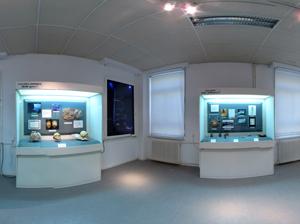
The Anthropological Museum of Athens University was founded in 1886. As a unit of the University, it implements both educational and research activities. It has constituted the most important center for the development of Anthropology in Greece, as well as in Europe. The Hellenic Anthropological Society (1924) and Professor Ioannis Koumaris have also contributed significantly to the development and communication of the science of anthropology. The main part of the Anthropological Museum scientific collections consists of skeletal series that cover all periods of the ancient Greek world. These collections have been the subject of systematic anthropological studies conducted by important Greek and foreign anthropologists, who have expressed basic views concerning the ethnogenesis, the shaping and the evolution of the Helladic population. Thanks to the Anthropological Museum’s studies which are mainly conducted in various caves, numerous human fossils have been discovered (many of which are of great importance concerning the presence and evolution of man in the European region), as well as many, highly important, palaeontological and cultural fossils from the Palaeolithic period.
CONTACT Professor of Physical Anthropology Th. K. Pitsios, School of Medicine, National and Kapodistrian University of Athens, 75 M. Asias st, Goudi, 11527 Athens, tel: 210 7462359, 210 7462358, 210 7462360, e-mail: tpitsios[at]med.uoa[dot]gr, anthropology-museum[at]med.uoa[dot]gr, aorgeta[at]med.uoa[dot]gr
Museum of Archaeology and History of Art
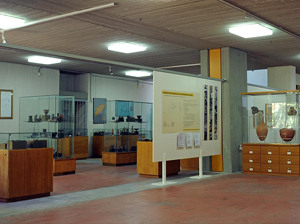
The Museum of Archaeology and History of Art, which has its seat in the University Campus, has a history dating from the beginning of the twentieth century. The efforts of professors of the University of Athens since that period to establish a depository of educational collections resulted in the foundation of the Museum of Archaeology (1941), later Museum of Archaeology and History of Art. Objects have been donated by public Museums, Ephorates of Antiquities and by private collectors. The Museum in its current display form is housed in the building of the School of Philosophy since 1994. In 2004, a partially covered Archaeological Park was inaugurated, comprising finds discovered in the excavations conducted by the 3rd Ephorate of Prehistoric and Classical Antiquities, during the construction of the Athens Metropolitan Railway. The Museum consists of eleven educational collections. All of them facilitate the students’ training, by allowing close observation and direct contact with original archaeological finds and works of art, thus enriching the educational experience. Students of Archaeology are given the opportunity to study systematically and handle a great variety of museum objects that are central to the understanding and appreciation of the methods of archaeological excavation and discovery, as well as the practices of ancient art and culture, not least the artistic expression of later periods.
The Educational Collections of the Museum are the following: Collection of Prehistoric Archaeology, collection of classical archaeology, collection of ancient sculpture, epigraphy and casts, collection of Byzantine painting, collection of Byzantine ceramics and applied arts, trans-Mediterranean and diachronic collection of pottery, collection of excavation research, collection of environmental archaeology, collection of rocks, minerals and ancient technology, collection of contemporary art, collection of ethiopian popular art: paintings, handicrafts. The Museum also includes a restoration unit. The Museum is a member of the International Council of Museums (ICOM) and regularly participates to activities like the International Museums Day and the European Days of Cultural Heritage. It is also open to society, frequently receiving groups of school pupils on guided visits and offering educational programmes, as well as organising lectures and interactive activities for students of other disciplines and for the wider public.
Opening Hours: From Monday to Friday 8:30-16:30. Access is free.
CONTACT Director: Maria Constantoudaki-Kitromilides, Professor of Byzantine Archaeology, University of Αthens, Head of school programmes: Alexandra Sfyroera - Faculty of History and Archaeology, School of Philosophy, University Campus, Zografou, Athens 157 84, tel./fax: +30 210 7277561, E-mail: museum[at]arch.uoa[dot]gr, http://museum.arch.uoa.gr/
Athens University History Museum
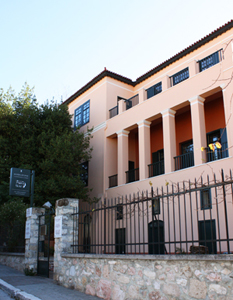
The Athens University History Museum is located in one of the oldest residential buildings still standing in Athens today. The building dates long before the 18th century and it is situated beneath the imposing heights of the Acropolis with a panoramic view of the old city centre. The historical building was the home of the architect Stamatios Kleanthis and is also known as the ‘Old University’, since it housed (1837-1841) the first University of the independent Greek state. For about a century, Athens University was the only institution for higher education in Greece. This is the reason why, besides the history of the University, the Athens University History Museum also illustrates the history of the newly founded Greek State. The Museum was inaugurated in 1987, in the context of the celebrations for the 150th Anniversary of the University of Athens. Its collections consist of old and rare book editions, manuscripts, diplomas, scientific instruments, portraits, photographs, medals, seals and other University memorabilia. The Museum organizes daily guided tours for school children, students and groups in Greek, English and French. It also offers learning programmes for school groups of all levels and for families during weekends. The Museum has been a very active scientific and cultural centre for more than twenty years. Throughout the year, it hosts lectures, conferences, seminars, temporary exhibitions, performances, film screenings, etc., while from May till October, it hosts a plethora of activities for the general public at its courtyards.The admission to the Museum is free.
Opening Hours: Winter, From 1st October to 31st May, Monday - Friday 09.30 - 14.30 / Summer, From 1st June to 30th September, Tuesday, Thursday, Friday 09.30 – 14.30, Monday & Wednesday 09.30 – 14.30 & 18.00 – 21.00, The Museum is closed on Saturdays, Sundays and Bank Holidays, except the first and the last Sunday of each month when the Museum is open to the public from 11.00 until 16.00.
CONTACT Director: Evangelos Papoulias, Tholou 5, Plaka, 105 56 Athens, tel.:210 3689510/502-506, fax:210 3689501, e-mail: museum[at]uoa[dot]gr
Museum of Biblical and Christian Archaeology
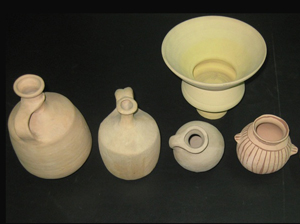
The Biblical Archaeological museum of the Theology Faculty in the University of Athens was an inspiration of the ever memorable Professor Vasileios Vellas. The Museum started in 1969 and was established in 1982. The first collection was a commission of copies from different museums such as the Louvre and the British Museum of London. The Museum now holds a number of exhibits such as the Tabernacle of the congregation, Temple of Solomon and Herod, Geophysical map of Palestine, the attires of High Priest and Priest, the Code of Hammurabi stele, the stele of Mesa and the Black Obelisk of Salmanassar. Also, it holds a number of copies of the archaeological findings from the excavations that the Department of Theology activated during 1990-2000 in the land of Israel such as pottery, coins, tools, small statues, sacred vessels, stamps from the 8th century B.C.E. and manuscripts. For the past forty-six years the Museum is open not only to the students of Theology Faculty but also to Schools and to other Faculties. The section of Hebrew Language and Interpretation of the Old Testament which is in charge for the Biblical Archaeological museum always look forward to grow its collection and to protect its heritage.
CONTACT Christos Karayiannis, Lecturer Dep. of Theology, School of Theology, University Campus, Athens, 15784, Zografou, tel.: 210 7275701
Botanical Garden
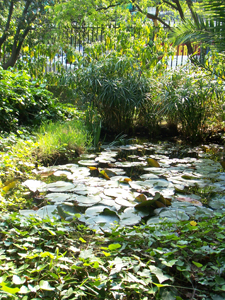
Botanical Garden (BG) of the University of Athens was established in 1835. The relevant Royal Decree referred to the Chaseki public domain as the installation site of the Garden. This property was used as an arboretum at the beginning and since 1838 as a Botanical Garden, under the supervision of Charles - Nicholas Fraas, Professor of Botany (Plant Science) at the University of Athens. The reorganization of the Garden started mainly after 1851 by Theodor von Heldreich (curator) and Theodoros G. Orphanides (Professor of Botany). The Garden was enriched with 2500 plants and two greenhouses were constructed. The Botanical Garden was recognized as a scientific branch of the University of Athens in 1867. The number of cultivated plants reached its higher level in 1971 (1350 cultivated species). Nowadays, most of the original area of the BG is under the supervision of the Agricultural University of Athens and only 7 acres remain as the historic Botanical Garden of the University of Athens. About 200 species are currently growing in the BG. Most of them are trees and shrubs, while there are a few herbaceous species and a small pond with aquatic plants. Due to the lack of the basic infrastructure and maintenance and because no staff is appointed to the BG at present, the Garden remains closed to the public and has only a minimal contribution to the education of the students. Starting again in 1994, the Botanical Garden of the University of Athens publishes an annual list of seeds for exchange (Index Seminum) and distributes it to almost 200 Botanical Gardens worldwide. The BG also contributes to the National Network of Greek Botanic Gardens and participates in the Meetings of the Network.
CONTACT Director: Prof. Margarita Arianoutsou - Farangitaki, School of Biology, Advisory Committee: Dr Theophanis Constantinidis, Dr. A Parmakelis, Dr K. Georghiou, School of Biology, Scientific support: Dr I. Bazos, Y. Kokkoris, e-mail: botgarden@biol.uoa.gr
Botanical Museum
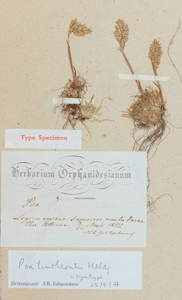
University of Athens was founded in 1837, and some years later, in 1850, a University Museum was created in order to host the first botanical, zoological and mineral collections of the Greek research community. This Natural History Museum (then called Physiographic Museum) remained as such until 1868, when, because of the rapidly increasing size of the different collections, it was decided each type of collection to be allocated into different Museums. Accordingly, the botanical collections were hosted in the Botanical Museum with Th. Orphanides, Professor of Botany at this time, being its first director. He was succeeded by Prof. Th. Afentoulis (1882), Prof. S. Miliarakis (1893) and in 1918 by Prof. I. Politis, who were eagerly involved in several scientific projects related to the exploration of the Greek biota. I.Politis is acknowledged as the first who organized collection of algae, fungi and lichen specimens. Today, the Botanical Museum of Athens University comprises a wealth of specimens. The exact number is not known since no full listing has ever been made; it is estimated that the collections may reach or exceed 100,000 samples. As of primary importance, the botanical collections by T.von Heldreich (subset of his herbarium), Th. Orphanides (full herbarium) and V. Tuntas (subset of his herbarium) are considered, since they include several specimens that serve as ‘Typi’ for published species, most of them endemic to Greece. Modern plant collections cover large parts of mainland and insular Greece and are carefully documented. They are registered in a database that permits to store, retrieve and analyze data in efficient ways. In order to contribute towards the raise of environmental awareness for the public and particularly the student community, the Botanical Museum also hosts an exhibition, which presents the spatial and temporal dynamics of natural and anthropogenic environment in the geographical area of Attica, particularly the Athens Metropolitan Area.
CONTACT Director: Prof. Margarita Arianoutsou - Farangitaki, School of Biology, Advisory Committee: Dr Theophanis Constantinidis, Dr D. Danielides, Dr Z. Gonou, School of Biology , Scientific support: Dr D. Kazanis, Dr I. Louvrou, Dr I. Pyrri, Dr K. Radea, e-mail: botmuseum@biol.uoa.gr
Criminology Museum
The Criminology Museum was founded in 1932, although the gathering of its collections had began years ago. The Museum is located within the premises of the Laboratory of Forensic Medicine and Toxicology in Medical School of the University of Athens and constitutes the first University museum in Greece dedicated to Criminology and to Forensic Sciences in general. The Museum is a non-profit institution, providing services to the community. Its main purpose has been not only the complete registration of almost all kind of crimes that took place during the late 19th and the early 20th centuries in Greece, but also, the multi-level support of the Faculties of Medicine and Law, as well as the Police Academies, for the education of students and staff. It is a centre for training, research, culture, study, promotion and scientific development, as well as artistic activity, beyond its self-evident educational and pedagogic function.
The main categories of the 1,500 exhibited objects in the Criminology Museum are the following: Weaponry of historic value, the only one guillotine ever used in Greece, ritual artifacts collection, counterfeit banknotes collection, a large collection of drugs of abuse, poisoning evidentiary items collection, chemicals and pharmaceuticals collection, collection of human remains (dried specimens, tattoos on human skin, mummies, mummified foetuses, embalmed heads of 12 bandits etc), wax models of wounds and injuries concerning violent death cases, loops collection used in hanging, collection of objects of general Forensic Medicine interest.
CONTACT Director: Maria Stefanidou-Loutsidou, Professor of Toxicology, Address: 75, Mikras Asias str., Goudi, Athens, University of Athens, Greece, tel.: (+30) 210 7462406, website: www.criminology-museum.uoa.gr
Museum of Dental School
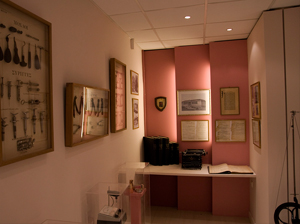
The Museum of Dental School opened its doors to the public in 2013 and is the only one of its kind in Eastern Mediterranean. It deals with the collection and study (recording, documentation, evaluation) of dental evidence in Greece. The main exhibition hall includes dental instruments dated from the 19th century. For example, there are dental drills, tooth forceps, instruments used in operative dentistry, instruments and appliances for dental prosthesis, dental handpieces and a very rare dental unit with an even more rare dental light. Also, Dental school's historical archive is incorporated to the Museum since 1916. At the same time, the museum considers of equal importance the building of a dialectic relationship between the present and the past. So, exhibition islets were created in selected areas of the Dental School complex. In this way the exhibits can be viewed in a daily basis, not only by the visitors of the Museum but also by the students and the patients. The Dental School Museum utilizing the advantages of modern Internet and Multimedia Technology developed also a Digital Museum (www.museum.dent.uoa.gr). The purpose was not only to show the exhibits but also to feature the history of Dental Education and Practice in Greece. Furthermore, organized tours are available for pupils, students and adult groups, after consultation. Moreover, special educational programs are designed for students of primary and secondary schools. The museum supports primary research projects and supports the undergraduate studies program.
CONTACT Ms Margarita Sakelliou, Museum of the Dental School, Dental School, National and Kapodestrian University of Athens, 2 Thivon st, Goudi, 11527Athens-GREECE, tel.: 210 7461319, fax: 210 7461319, email: marsakel[at]dent.uoa[dot]gr
Museum of Education
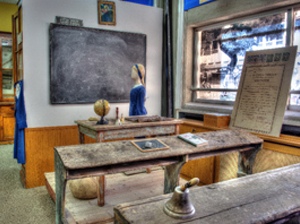
The Museum of Education, was founded at the School of Philosophy of the University of Athens in 1993, with the purpose to document, preserve and exhibit the history of Greek education in the 19th and 20th century. At the same time the Museum provides a laboratory for training students on educational issues.
The Museum aims at preserving the cultural inheritance related to Education, providing material for research and study of the history of education, pedagogy and schooling in Greece, both at undergraduate and postgraduate level, from antiquity to the present, in relation to the Education in Balkans, Europe and the rest of the world, training graduates in the fields of: a) museum education and b) documentation and conservation of material that exists in schools and which is otherwise lost, stimulating the interest of the educational community and other groups, towards related subjects.
Since 2014 the Museum has been running indoor educational programs addressed at schools students, families and elderly people. A mobile interactive museum exhibit invites the museum audiences to attend its programs in outdoor locations. The interactive mobile exhibit is an innovative tool that condenses the history of education in Greece. The students are intrigued to handle the automaton mechanisms of the exhibit and its perplex levers with the purpose to meet with multiple pedagogical models from the ancient history until the modern days. The programs designed for the primary school familiarize the students with the past teaching methods not only through an oral narration but also through participation in several activities such as puppet theatre, drama education, etc. During the pilot programme addressed at high schools, the students have the opportunity to attend a museum theatre piece on women education: a student living in the 21st century meets another student from the early 20th century with the purpose to show the differences between the past and modern pedagogical models and social customs. Currently, the museum hosts a permanent exhibition entitled: “Images of Modern Greek Education” with artifacts from the 19th and 20th century.
CONTACT Director: Prof. M.Z. Fountoupoulou, Head of Educational Programs: Ms E. Xenaki - Address: School of Philosophy, University Campus, Athens, 15784, Zografou tel.: 210 7277826, 210 7277564, email: elixen[at]ppp.uoa[dot]gr Web: www.mouseiopaideias.org
Museum of George Papanicolaou (Dr. Pap)
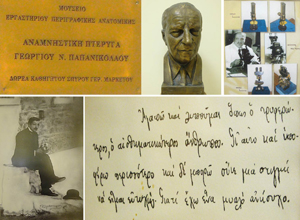
February 2014 marked the 52th anniversary of the death of George Papanicolaou, the inventor of the Pap test for cervical cancer screening. The great Greek researcher became famous with the name George N. Pap. The Medical School of the National and KapodistrianUniversity of Athens, namely the Anatomy lab hosted a special material from his life in Cornel's University (Anatomy Lab) in America. Fifty square meters were given from the Emeritus Professor of Anatomy Dr. Nikolaos Papadopoulos, adjacent to the anatomy amphitheater, one of the few surviving classical anatomical amphitheaters worldwide dedicated to the famous anatomist George Sklavounos. The professor and Director of the Department of anatomy Dr. Panagiotis Skandalakis extended the museum and made it part of the Anatomical Museum of the Department of Anatomy. Spyros Marketos, Professor of History of Medicine and the associate professor of Anatomy Dr. Dimitrios Lappas sponsored the museum and classified its collections in sections. Among the exhibits there are rare photographs from Papanicolaou's life, his awards, the plan of the last Greek banknote and his portraits. The central focus of the exhibition includes photographs, letters and other documents about the scientific work of Papanicolaou. Discussions and presentations related to the research on and modern methods of the prevention and diagnosis of female cancers also exist. In a separate event, there will be a screening of Lefteris Xanthopoulos' documentary “George Papanicolaou: Pap Test.”
The museum is currently closed to the public due to renovation works.
CONTACT: Assistant Professor: Dr. Maria Piagkou, Anatomical Museum, Department of Anatomy, School of Medicine, National and Kapodistrian University of Athens, 75 M. Asias st., Goudi, 11527 Athens, tel.: 210 7462305, fax: 210 7462398, e-mail: mapian[at]med.uoa[dot] gr, Associate Professor, Dr. DimitriosLappas
Historical Archive
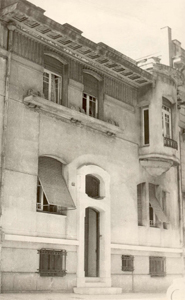
The Historical Archive (year of establishment: 1987) has collected and classified the archival holdings of the University. This material constitutes a broad research infrastructure for the study of the history of the University of Athens, but also of Greek and European history in general. The collections of the Archive (around 1,600,000 pages) consist of: a) the archives kept by the secretariats of the Faculties and the archives kept by administrative centres (Senate, Protocol, Public Relations, Archive of the Directorate of the Faculties), b) Personal Archives of the professors of the University of Athens, c) Photographic, audio and cinematographic material from cultural events organized by the University, d) Collection of portraits of University professors. (Moreover it contains archives from institutions founded by the university (hospitals, church etc.) Finally, the Historical Archive aims to gather every record and testimony of the student movement and its activities, as well as the activities of the Teachers' Union. The Historical Archive has focused on the digitization and electronic management of its massive archival material (nearly 500,000 items), aiming to preserve information from the old paper archives, in order to provide historical research with the advantages of technology, regarding classification of documents, accessing and processing information.
CONTACT 45 Skoufa St., 10672 Athens, Tel. 2103689522, E-mail: mtsiot[at]archive.uoa[dot]gr, www.archive.uoa.gr
Museum of Mineralogy and Petrology
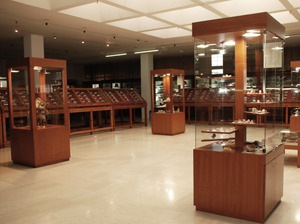
The original collections of the Mineralogy and Petrology Museum were created at the Natural History Society that was established in Athens in 1835. The University acquired the collections in 1837. The University Museum of Mineralogy-Petrography was created in 1908. The Mineralogy and Petrology Museum has been part of the Geology Department since 1982. Until 1979, the Museum was housed in the building located on Akadimias St, which is known today as the Kostis Palamas University Building. At that time the collections were transferred to University campus, where they were stored until 1996. In an effort to repair the 19th-century wooden display cases, the collections suffered severe damage. Between 1997 and 1999, the samples were identified and re-classified according to the modern classification system, so that the Museum could open again. This task was undertaken by Professor A. Katerinopoulos, under the supervision of Professor K. Sideris, then chairman of the Geology Department. The Museum reopened officially on 7 February 2000. The Museum occupies a total area of about 1100 m2. The collections are exhibited in the three halls, while the fourth hall is for audio-visual presentations and lectures. It is not only the oldest collection of minerals and rocks in Greece, but it is also one of international repute. The importance of the collection does not reside solely in the presentation of particularly beautiful samples, but in the abundance and quality of the minerals from “classical” sites in former states of the Austro-Hungarian Empire, the German Empire and Tsarist Russia, primarily from sites which have today been exhausted and are known only from the literature.
CONTACT Panepistimioupoli Campus Zografou, PO: 15784, tel.: 2107274112, 2107274180, fax: 2107274883
Director: Prof. A. Katerinopoulos, tel.: +30-210-7274124, fax: +30-210-7274883, e-mail: akaterin[at]geol.uoa[dot]gr, http://museums.geol.uoa.gr/mineralogy/, https://www.facebook.com/MineralogyAndPetrologyMuseum
Moulage Museum of Andreas Sygros Hospital
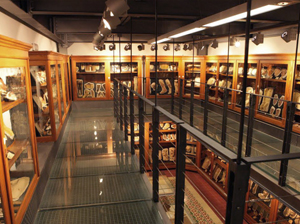
In Athens, the Moulage Museum of “Andreas Sygros” Hospital was established in 1912 by the distinguished Professor of dermatology and syphilology George Photinos (1876-1958), in the newly founded “Andreas Sygros” dermato-venereological hospital. Professor Photinos was initially exposed to the moulage technique during his training in dermatology in Saint Louis Hospital in Paris under the renowned moulager Jules Baretta (1822-1923) who refused to pass him on the knowledge. Continuing his education in Berlin, Photinos met the moulage maker Heinrich Kasten (1842-1921) who accepted to reveal him the technique. The initial wax models of Athens’ collection are credited to have been made by Professor Photinos himself. Later, the moulages were produced by specially trained craftsmen such as the painter Constantine Mitropoulos. In 1913, Photinos donated 60 moulages in Military Medical School at Val-de-Grâce in Paris presenting battle injuries during the siege of Bizani (First Balkan War). Today, the Moulage Museum of “Andreas Sygros” hosts the third largest international moulage collection following Paris and Vienna Hospital, consisting of 1660 items depicting a variety of skin disorders of an excellent artistic quality. Apart from being an important cultural heritage, moulages continue to be part of medical training and public health education representing a mean by which art can support science.
CONTACT Director Prof. Christina Antoniou, mail: kathigitis[at]syggros[dot]gr and Mrs Katerina Christopoulou, mail: library[at]syggros[dot]gr , the Moulage Museum of "Andreas Sygros" Hospital, 5 str. I. Dragoumi, 16121, Athens Greece. Tel: 0030-210-7265100
Museum of Paleontology and Geology
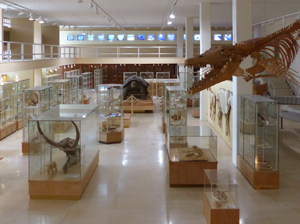
The collection of the Museum of Palaeontology & Geology includes fossils of animals and plants from all over Greece, thus covering more than 300 million years of the geological history of our country. The collection is very rich and is distinguished for the excellent preservation and uniqueness of its exhibits. It also includes samples from abroad, micropalaeontological and stratigraphical collections and reconstructions of palaeoenvironments of the beginning of the 20th century. The collections are constantly being enriched with exhibits coming from research projects, palaeontological excavations and donations. At the premises of the museum’s exhibition, one may admire some of the most important fossils discovered in Greece such as the world known fauna of Pikermi with the primitive hipparions and the machairodonts that lived about 7 million years ago, skeletal reconstructions of endemic mammals, as well as fossils that have played an important role in the history of evolution of life on earth, in an attempt to travel back in time with fossils as our guide. The museum is open to the public in order to circulate knowledge and inform people about topics that concern the promotion and protection of our palaeontological heritage while it organizes and realizes periodical exhibitions and events. It is open daily to schools and organizes educational programs for pupils/ students as well as guided tours by its scientific staff. The museum is the oldest and richest in exhibits, Greek centre of Palaeontological research. Its collections are visited every year by many foreign researchers, postgraduate students and PhD students, while various research projects concerning mainly Vertebrate or Invertebrate Palaeontology have been realized at its labs.
CONTACT Director: Prof. G. Theodorou, tel. 2107274086, 2107274163, e-mail: palaeo-museum[at]geol.uoa[dot]gr, gtheodor[at]geol.uoa[dot]gr, web page: http://paleo-museum.uoa.gr/paleontology
Museum of Pharmacology
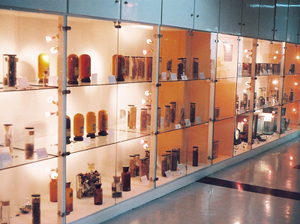
The Museum of Pharmacology was inspired and established by Prof J. S. Papadopulos in 2003. Prof. Papadopulos, at the beginning, with a small grant from two bookstores but with a lot of personal work, and a lot of enthusiasm, organized the Museum of Pharmacology housed now at the Department of Pharmacology in the Medical School of the University of Athens. A collection of old research instruments (eg. Centrifuges, balances, autoclaves, etc), most of them of the early 19th century, books, biochemical and a large collection of plants are exposed. The Museum of Pharmacology is a challenging effort to: a) Encourage postgraduate research and learning on relative topics, b) Provide knowledge and innovative ideas on how laboratory technology develops or becomes useless, c) Inform younger students on pharmacological research topics and experimental philosophy, d) Provide through the net a wide variety of information concerning its belongings (by simultaneously functioning as a virtual museum).
CONTACT: Charis Liapi, Associate Professor of Pharmacology, Dept. of Pharmacology Medical School, University Campus, Athens, 11527 Goudi tel.: 210 7462504
Museum of Physical Sciences and Technology
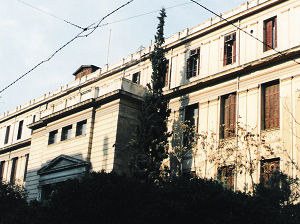
The Athens University Science and Technology Museum preserves and stores a rich and unique collection which consists of more than 10.000 instruments of the University’s Physical Sciences School used for learning purposes, researches, as well as for technological appliances. The Museum also preserves a collection of instruments and the archive of the University of Smyrni which Konstantinos Karatheodrori saved and brought in Greece. The building which used to host the Museum till its renovation (started in 2007), was designed by the German architect Ernest Ziller. In the past, the building also housed the Old Chemistry Laboratory of the University of Athens, founded in 1887 by Professor Anastsasios Christomanos. Many great Professors of Sciences taught there, such as Christomanos, Eisntein’s tutor and pioneer in the organization of the University of Smyrni, the mathematician Karatheordori, Sommerfeld’s partner Dimitrios Hondros, Fisher’s partner and fellow researcher Leonidas Zervas, Ceasar Alexopoulos and others. In the past, the building also hosted the National Chemistry Laboratory, the General Chemistry Laboratory of the State, the National Bureau of Standards, the Land Surveying Committee, the Sea Scaping Company, the ‘Physiodiphic’ Company, the Botanic Museum, the Hellenic Astronautical Society and the Research Centre of the international programme “Nestor”.
CONTACT Chrysoleon Symeonidis, tel.:6977186596, Solonos 104, Athens, 10680
Zoological Museum
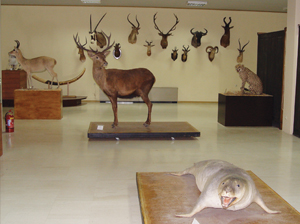
The Zoological Museum of the University of Athens belongs to the Department of Biology. It is housed in the University campus, and has an area of about 2200 square meters . Its story began 150 years ago, as part of the Physiographic Museum of the University of Athens, in the form of a small collection of stuffed animals. Today it is the oldest and richest zoological museum of Greece. The Museum's collections include mammals, birds, reptiles, amphibians, fish, marine invertebrates, snails, insects and other invertebrates from Greece and other countries as well as anthropological findings. The Museum's activities include the preservation of the natural heritage of Greece through the conservation of collections and through the creation of databases and archives, the research on the fauna of Greece, the education of students, the raising of public awareness, particularly of young people, and the provision of advice to individuals, organizations, public services etc.
CONTACT Director : Assoc. Professor Anastasios Legakis, Panepistimioupoli Campus Zografou, PO: 15784
